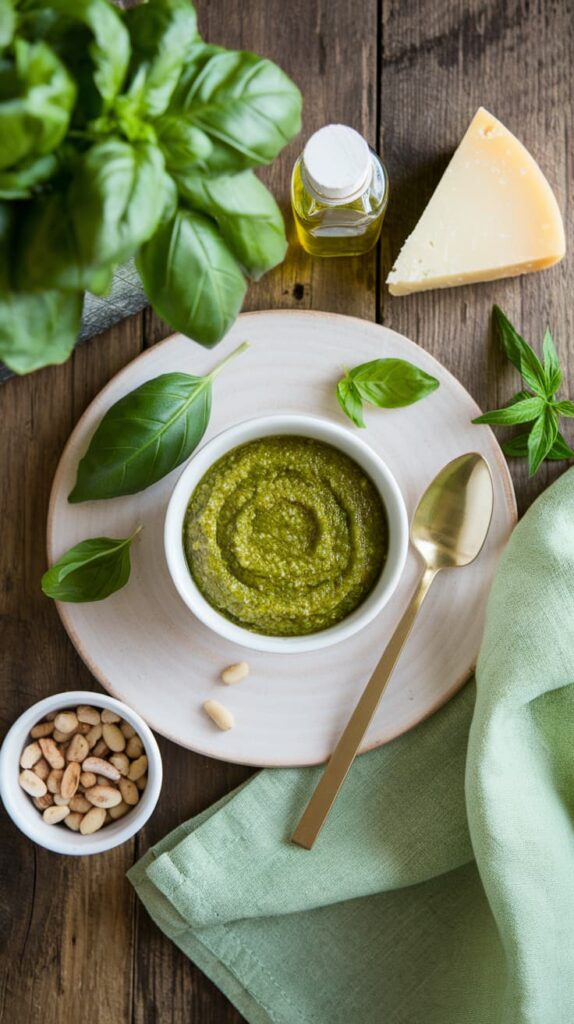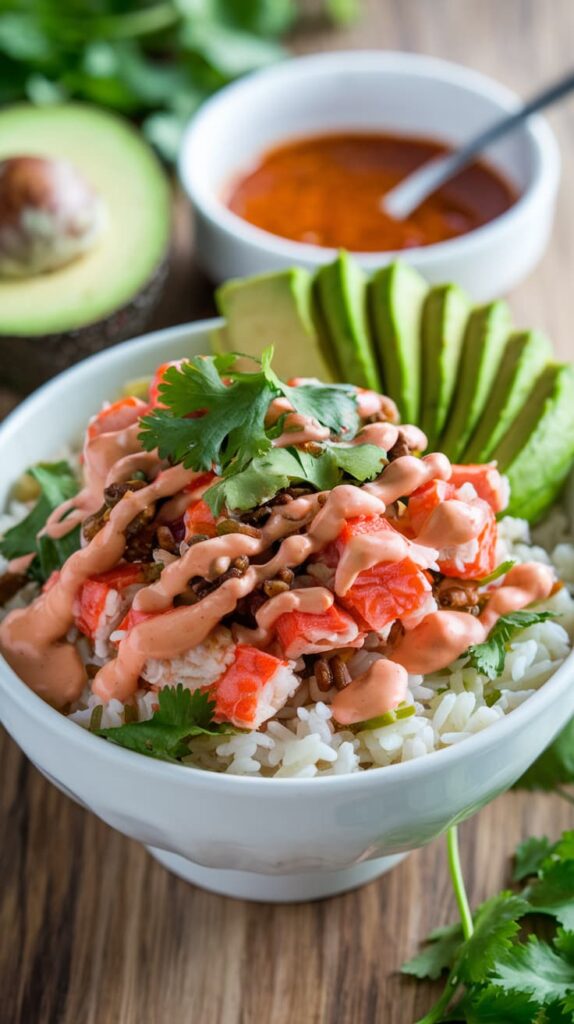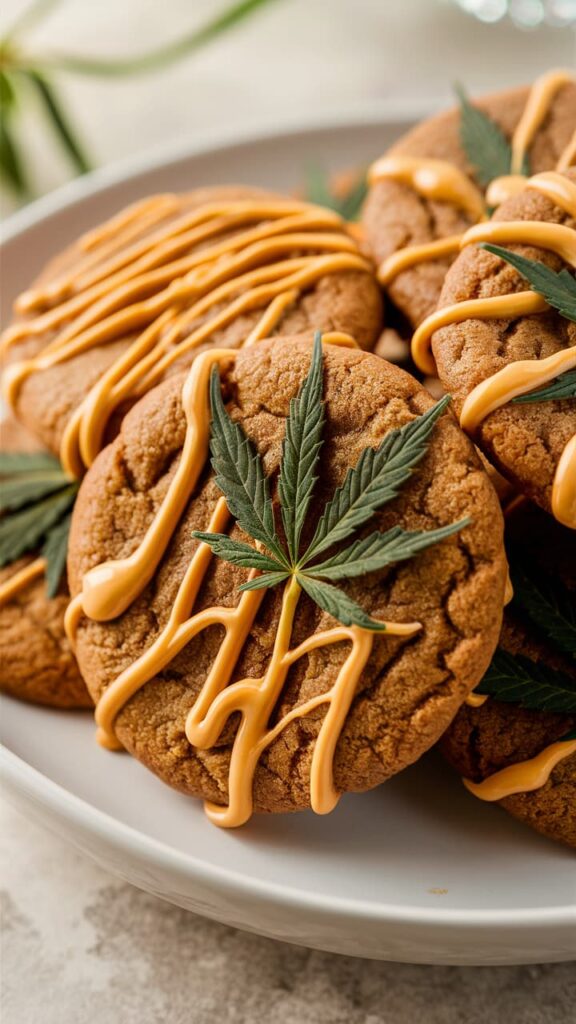Canna Oil Guide
Ever wished you could turn your favorite recipe into a super chill treat? Well, my friend, canna-oil is that secret ingredient that you have been waiting for.
Canna oil is a versatile ingredient that can elevate your cooking from “meh” to “mind-blowing” (without literally blowing anything up…safety first!). But before we get into “complex” terms like decarboxylation and double boilers techniques, let’s get you prepped with the essentials!
This guide will be your roadmap to infuse dishes that’ll blow your mind (and maybe Willy Wonka’s too). We’ll break it down nice and easy, so fire up your oven and get ready to make your own canna oil.
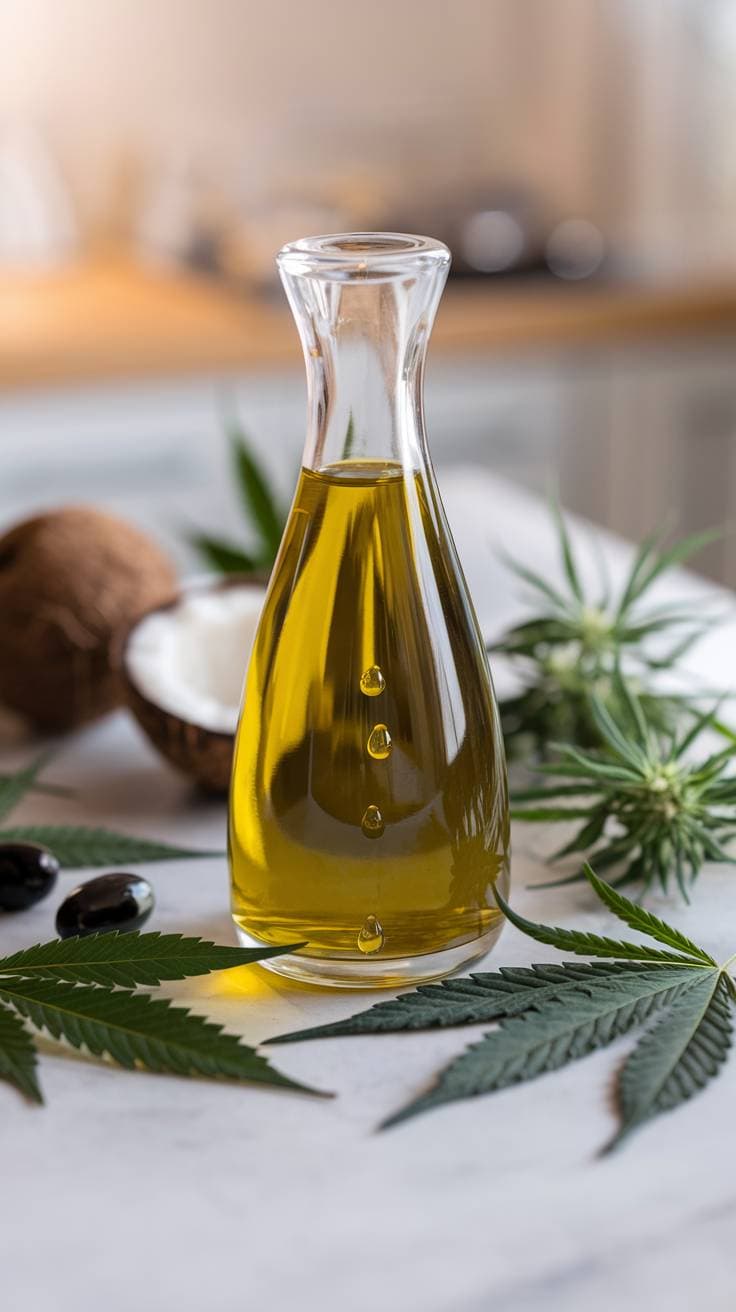
Are you new to edibles?
No worries! I created this guide to break down everything you need to know for a smooth first experience. Dosage, effects, and all that good stuff!
BEGINNER’S GUIDE TO CANNABIS EDIBLES
Understanding Canna Oil
Canna oil isn’t some kind of mad scientist concoction guaranteed to turn your brownies into psychedelic putty, it’s just another culinary tool, just like olive oil or coconut butter. But instead of adding a hint of the Mediterranean or a tropical vibe, canna-oil infuses your creations with, well, a special kick!
So, what exactly is canna oil? It’s basically a super concentrated shot of cannabinoids, like THC or CBD, mixed with a regular cooking oil like olive or coconut. Making it perfect for incorporating into your favorite recipes.
Here’s what makes canna oil so popular for cooking edibles:
- You control how much oil goes in your recipe, which means you can totally control how strong the final dish is. This is awesome for beginners who want to take it easy at first.
- Can be used in pretty much any recipe that calls for fat. Think about swapping it for butter in your brownies, or using it to add moisture to savory dishes like mashed potatoes.
- If you store it right, it’ll last for months, so you can whip up a batch and have it on hand to elevate your dishes whenever inspiration strikes.
Carrier Oils
Let’s talk about carrier oils, these silent sous chefs play a vital role in the taste, texture, and potency of your final dish.
In essence, carrier oils are the base in which our decarboxylated cannabis will infuse. They’ll not only dilute the potency (making it easier to control your dosage), but also contribute their own unique flavor profiles and cooking properties.
Let’s check out the most popular ones:
Coconut Oil
This carrier oil is a great all-rounder! It boasts a high smoke point, making it ideal for high-heat cooking like frying or baking. Plus, it’s got a subtle flavor that won’t mess up your delicious dishes.
Quick tip: Coconut oil can solidify at room temperature, so keep that in mind for consistency in your final dish.
Olive Oil
Remember that olive oil in your kitchen? The one you usually toss on salads? Guess what? It’s actually a great carrier oil too!
Depending on the kind you get, it can have all sorts of fun flavors: fruity, peppery, you name it! This can add a nice little kick to your food. Just keep in mind, olive oil doesn’t like super high heat as much as some other options. So, it’s perfect for drizzling on a finished dish or for cooking things that don’t need crazy heat.
Avocado Oil
Avocado oil is a great option for your canna-treats, definitely worth a shot! It can handle the heat way better than most oils, has a mild flavor that won’t mess with the flavor of your edibles, and is packed with healthy fats.
The downside: It can be more expensive than some other options. But hey, if you want to fancy up your cannabis-infused edibles, avocado oil might be the perfect choice!
Grapeseed Oil
This lightweight oil is a good option for those who prefer a very neutral flavor. It has a high smoke point, you can find it pretty much anywhere, and is readily available, making it a convenient choice.
But, let’s be honest, grapeseed oil is not gonna win any awards for being the tastiest oil out there. It’s pretty neutral and compared to some other oils, it might not be loaded with tons of health benefits.
Choosing the Right Carrier:
There’s no single “best” carrier oil. The ideal choice depends on your culinary goals. Consider these factors when making your selection:
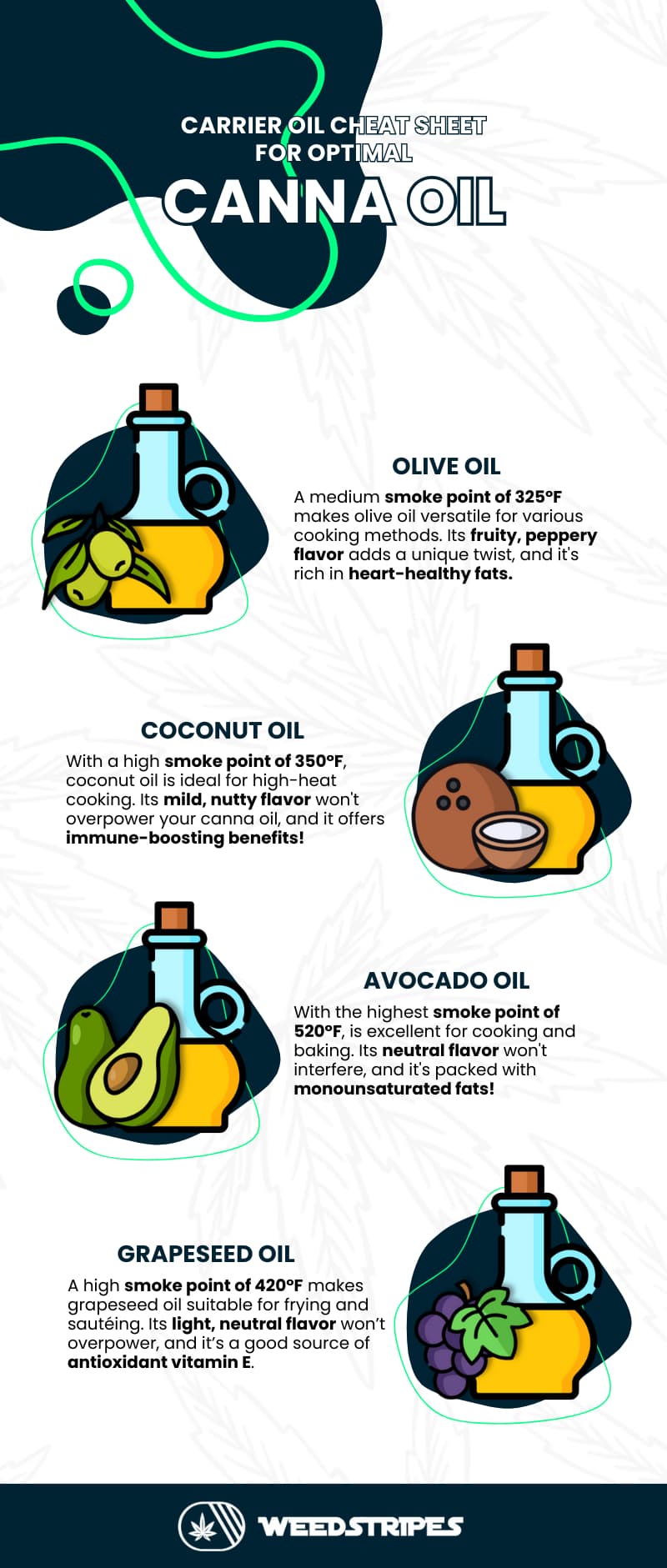
Decarboxylation Process
In its raw state, cannabis contains cannabinoid acids like THCA and CBDA. Decarboxylation uses heat to remove a carboxyl group from these acids, essentially transforming them into the potent THC and CBD we all know and love!
Key Takeaways:
Head over to my decarboxylation guide where you can find all the nitty-gritty details and step-by-step instructions!
Infusion Methods
Once you’ve decarboxylated your herb, the next step is to infuse it into your chosen carrier oil. There are several methods to achieve this, each with its own advantages and disadvantages.
The most popular methods include:
- Sous Vide: A precise method for maximum potency.
- Stovetop: A simple method requiring close attention.
- Double Boiler: A gentle method ideal for delicate oils.
- Slow Cooker: A hands-off approach for larger batches.
- Infusion Machines: Automated devices for consistent results.
For a detailed guide on these methods and their pros and cons, check out my cannabis infusion guide!
How to Make Canna-Oil
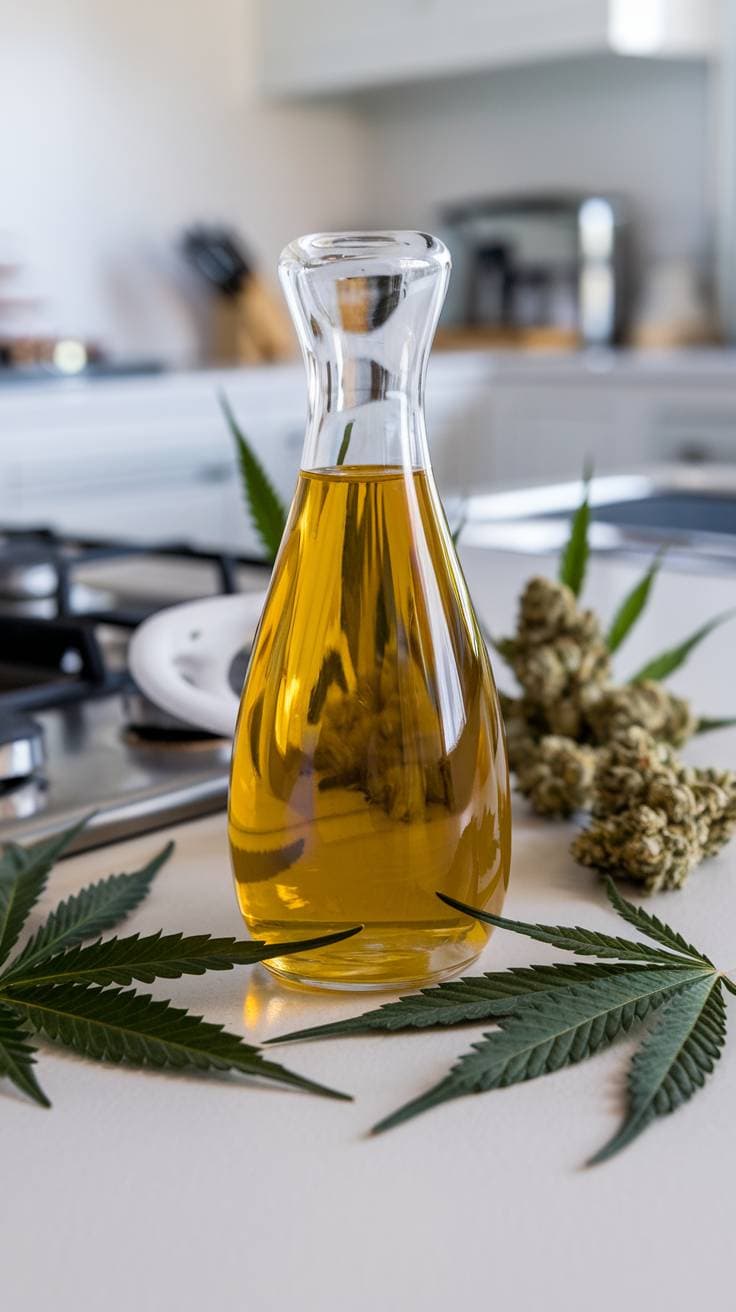
Making canna oil itself is fairly simple, but there are a few key steps to ensure your golden creation packs the perfect punch (without tasting like a burnt ashtray). Here’s a breakdown of the steps to make canna oil using the double boiler method:
Tools:
- 1 cup of decarboxylated cannabis.
- 1 cup of cooking oil.
- Cheesecloth.
- Double boiler.
- Airtight glass container (for storage).
Instructions:
1. Set Up Double Boiler: Set up a double boiler by placing a heat-resistant bowl over a pot of simmering water.
2. Prepare Infusion Mixture: Add your chosen carrier oil to the heat-resistant bowl. Once heated, add your decarboxylated cannabis.
3. Gentle Heat and Stir: Allow the mixture to heat gently over low to medium heat for several hours, stirring occasionally.
4. Filter the Oil: Strain the oil using a fine-mesh strainer, cheesecloth, or a coffee filter, leaving behind any plant material.
5. Safekeeping: Now you can use or properly store it to maintain its freshness and potency until you’re ready to make a canna recipe.
Put your skills to the test with our infused olive oil recipe. It’s a tasty and easy way to elevate your culinary creations!
Storing Canna-Oil
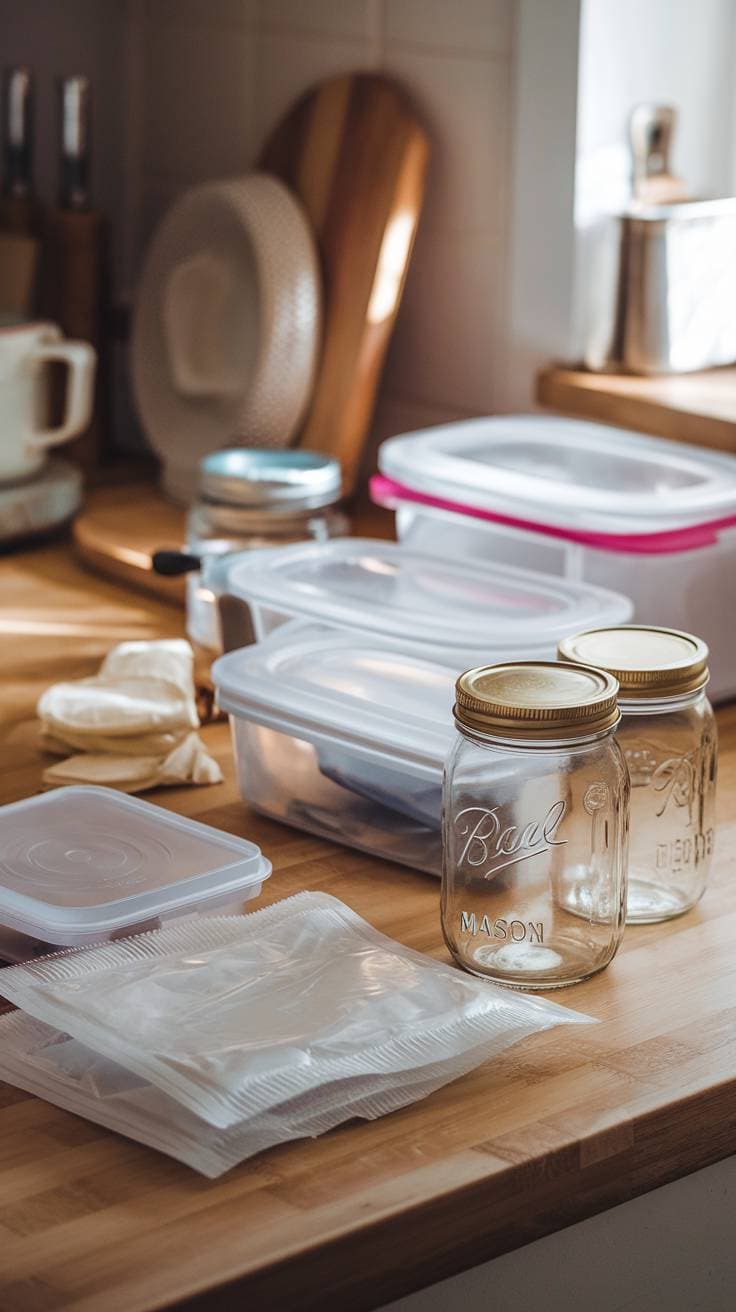
Think of your canna-oil like a fine wine (minus the fancy label and questionable grape-stomping rituals). It needs cool, dark, and undisturbed conditions to maintain its potency and delightful taste! Check out my Edible Storage and Preservation Guide where I packed everything you need to know to keep your edibles strong for a long time!
Cooking with Canna Oil
Forget the one-dimensional “pot brownie” stereotype. Canna oil can elevate your cooking in several ways:
- Flavor Enhancer: High-quality carrier oils like olive oil or avocado oil impart their own delicious notes, while canna oil subtly complements those flavors.
- Moisture Magician: Canna oil adds a touch of moisture to baked goods, leading to delightfully tender muffins, brownies, or cakes.
- The “Secret Weapon” of Savory Dishes: Canna oil can add a discreet “je ne sais quoi” to savory dishes like pasta sauces, marinades, or stir-fries.
Incorporating Canna Oil Seamlessly
Canna oil can be a great substitute for butter or other fats in your recipe, but there are a few things to keep in mind for a successful bake:
- Dosing: Start slow! Take a small amount of canna oil at first and see how you feel. Effects can take up to two hours to hit, so patience is your friend.
- Mixing Magic: To make sure your goodies are evenly potent, mix that canna oil really well into your batter or dough. No pockets of super strength allowed!
Recipe Inspiration: Beyond the Brownie
Now, let’s get creative! Canna oil opens a world of possibilities beyond the classic pot brownie. Here are some recipe ideas to get you started:
Experimentation is key! Your creativity will lead to delicious and potent dishes that will tantalize your taste buds as well as your mind!
Safety Considerations and Dosage
You have to be careful with canna oil, It’s not like forgetting baking powder (easy fix with some bubbly water!), too much canna-oil can be a rough ride! Be mindful, that there’s no magic amount for everyone, it’s like spices in food: a sprinkle of chili powder for one person might blow another’s head away.
Several factors influence how your body reacts to canna-oil, including:
- Body Weight and Metabolism: Someone with a higher metabolism might need a bit more than someone with a slower one to achieve the desired effects.
- Potency and Desired Effects: Understanding the potency of your oil and what effects you’re seeking is crucial for portion control.
- Strain and Cannabinoid Concentration: Knowing the strain used to make your oil will help you estimate the potential effects.
Canna Oil Potential Side Effects
This guide wouldn’t be complete if we did not talk about the potential side effects of using canna oil on your food. Here you have a quick overview of the most common ones:
| Side Effect | Description |
|---|---|
| Dry Mouth. | Reduced saliva production. |
| Dizziness. | Loss of balance and nausea. |
| Mood Changes. | Anxiety, paranoia, or dysphoria. |
| Changes in Appetite. | Increased or decreased appetite. |
| Fatigue. | Excessive tiredness or lack of energy. |
These effects are usually temporary, but if you ever feel overwhelmed, remember: drink plenty of water, find a comfortable spot to relax, and reach out to a friend if needed.
For an even deeper dive into edible dosing, check out my dosing guide. There I will go into more detail and equip you with the knowledge for dosing your homemade edibles.
Troubleshooting Common Issues
I have to be honest here, I have run into occasional snags many times! But thanks to that, today I can teach you what are those common issues and how to get your canna oil back on track:
- Bitter or Grassy Flavors: Most likely, some plant bits snuck through your straining after decarboxylation. To solve it you can add a squeeze of lemon or mix a carrier oil with a stronger flavor and please, next time be super careful when you strain that stuff!
- Issues with Consistency or Texture: If your oil turned out thicker than butter, don’t toss it out! Fix it its simple, all you need to do is heat it up really slow on low (like when you’re melting chocolate), just make sure you do not burn your oil.
After all, adjusting recipes on the fly is what makes cooking an art, not just a science!
Legal Landscape of Canna-Oil
Canna-oil is fantastic, but just like knowing your oven temperature is crucial for those delicate cupcakes, understanding the legalities of canna-oil ensures a smooth experience.
In some places, canna-oil is treated like a sprinkle of cinnamon, perfectly legal for recreational or medical use. In others, it might be considered more like an exotic spice: restricted or even entirely off-limits.
As laws are constantly evolving, here’s what I recommend:
- Do Your Research: Don’t get burned! Before infusing your oil, familiarize yourself with the specific laws in your state. Government websites, cannabis regulatory agency pages, and reputable news sources are all great places to start your legal fact-finding mission.
- Know Your Limits: Even in places where weed is legal, there might be limits on how much you can have, how strong edibles can be, and who’s allowed to buy or make edibles like cannabis oil. You must dig into this stuff, please check your local laws!
- Stay Informed: Bookmark credible resources and consider subscribing to newsletters from organizations focused on cannabis reform. This way, you’ll have all the latest information to keep your canna-cooking adventures on the right side of the law.
I can’t possibly list every state’s legal stance on canna oil in this guide. Still, I can refer you to DISA’s interactive map that summarizes the legal status of medical and recreational cannabis use in the major states.
Congratulations! Now you’re equipped to whip up delicious edibles that are not only tasty but also tailored to your desired effects. Don’t be afraid to get creative, after all, the kitchen is your playground, and with canna-oil, the possibilities are endless!


